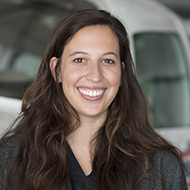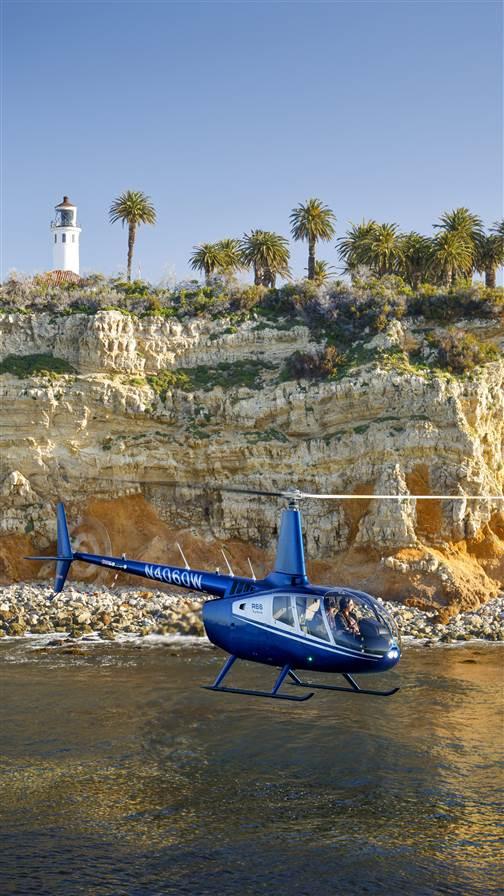Romeo Hotel
Robinson Helicopter Company turns 50
Some of the most iconic companies had humble beginnings. Cirrus started on the family farm, Apple began in a garage, and Robinson Helicopter Company started in a living room.

In the early 1970s, Frank Robinson, who had worked for Cessna, Bell Helicopter, and Hughes Helicopter Company, decided he wanted a small, low-cost helicopter made with a personal use mindset. Frank’s son and now-CEO Kurt Robinson has been part of the company since the beginning, which is now in its fiftieth year following the death of his father in November 2022.
“I started working here in 1980, but I’ve actually in some senses worked here all my life,” says Robinson. “And I was there when he started it in his living room.”
The last stronghold of the once-great Los Angeles aircraft manufacturing market, RHC has been based at Zamperini Field in Torrance, California, ever since it moved from the Robinson family home in Rolling Hills, fondly called the Longhill house for the street that it’s on.
Small beginnings
“When we started, it was just to build a helicopter that [Frank] wanted to fly,” says Robinson, “because nobody else had that. And it’s really interesting then once he started that, that you just keep following that and keep developing it. As soon as you have a two-place, well, people want a four-place. And once you have a four-place well, now we’d like something bigger, we want a luggage compartment, we want to go to different altitudes…so that’s where you get into the development of the R66.”






Although his name is on the outside of the building, Robinson notes that he didn’t inherit a stereotypical family business.
“It was fun and exciting because we were just getting started. So, it’s not like where you walk into a family business and you go ‘here you go it’s all developed and now you have to grow,’ it was trying to figure it out. And working with not only my dad, but with 100 other employees trying to get production going, trying to get things started, and just solving all those kind of problems.”
The living room days are long gone. Now, the factory is 617,000 square feet over three clean, white buildings; the street off Pacific Coast Highway perpendicular to RHC’s parking lot is named Robinson Way.
Stepping into the sharp-looking corporate lobby, you wouldn’t guess what’s just on the other side of the wall. But walk past a conference room, take two turns in a narrow hallway, and open the door to a bright, voluminous factory where every Robinson helicopter is created from the vertical firewall out.
Helicopters in various stages of assembly line the factory floor, some so fresh in the build process or so stripped down for an overhaul that they look like cactus bones—artfully curved yet too hollow. Employees dress casually, and the classic LA sports teams and company pride are well represented in toolbox stickers and attire. Seats and cushions are machine-sewn by hand in one section, and in another, fuselages turn on spits like rotisserie chickens as they’re assembled. Hundreds of rotor blades rest on angled shelving, and in the parts of the warehouse where the helicopters are neither being assembled nor manufactured, they’re being tested to meet production and safety standards.
In the shipping department, helicopters are packed into nondescript wooden crates that would fit right into the end of Raiders of the Lost Ark. A regularly changing whiteboard indicates where in the world they’re off to, and whether by land, air, or sea. This week, there are shipments to five countries on four continents. The fact that RHC developed all its helicopters privately, without government investment, means it is easier to export its product. The 120 global Robinson dealers don’t hurt, either.




Even with a smaller market than the fixed-wing world, every helicopter that will be made in 2023 is already spoken for, and sales continue to trend up. The last two to three years, Robinson says, has seen a “substantial increase in demand.”
“Last year I believe we did 244 helicopters total, meaning 2021, and this year we just completed 2022 [and] we did 258. So, we have an increase, which given all the shortages I guess would be a victory, but we really wanted—and we expect—this year to produce over 300.” While labor issues have affected most markets since the pandemic, one COVID-related issue that has hurt RHC less than others is the supply chain.
“Certainly, the pandemic created some supply shortages and supply shocks, for lack of a better word. And the last couple years has been very difficult. Fortunately, we make a high percentage of our parts—close to 80 percent—are actually manufactured and made here so we could control our own parts and components. [The pandemic] reduced employment in those times but it enabled us to continue manufacturing in-house and control our own quality and our own supply.”
The helicopters’ instrument panel is kept deliberately slim to keep pilots looking outside. When you’re flying as low as helicopters most often do, the ground (or wires, or other obstacles) can swiftly come up and meet a distracted pilot. Bird strikes are also a concern, and one of RHC’s newer features is a bird strike-resistant windshield. Robinson says he didn’t expect it to be as popular as it is—it looks slightly less sleek—but now, nearly every new helicopter includes this option.
Another innovation is the onboard 4K camera that comes standard with every helicopter. Not only are they a ready-made tool for filming air tours and flight lessons, they’ve also been useful in troubleshooting maintenance issues, an especially powerful tool for a customer base as widespread as Robinson’s.
Flight tests
The final major step before they’re sent to their forever homes is to, of course, flight test the aircraft, and the Robinson ramp is busy. The flight test ramp hosts both new and overhauled aircraft, as well as some research and development ships. It’s a clear day, and from the hangar doors, downtown Los Angeles gleams in the distance. To the left of the flight test ramp is the safety course and its yellow Romeo-Hotel N-numbered helicopters. Originally created in part as a response to a string of pilot error-induced mast bumping fatal accidents in the R22, RHC runs the two-day safety course throughout the year. Time in type and a rating are required, but the course—starting at $900 and taught by experienced CFIs—offers great bang for the buck.
Helicopter flying is a vastly different sensory experience than fixed-wing flight. Instead of that steady hum and high rpm of an airplane engine, there’s the slower whop whop whop of the rotor. Instead of throttle and a yoke, there’s a cyclic and collective. The control inputs are nearly imperceptible, the cyclic moving less than an inch for nearly all maneuvering in normal flight. When the helicopter is at its slowest, power is at its highest. The view, instead of being obstructed by the fuselage or wings, is now widely expanded through the big bubble windshield. Even a helicopter pilot’s posture is different, sitting almost straight up with feet just a little forward on the antitorque pedals as if on horseback, as opposed to the almost motorcycle-like attitude a pilot must sometimes take in a sporty taildragger. It is hovering, though, that is the most unique, and what truly sets helicopters apart from other aircraft.
“There’s clearly a spot in the world for helicopters, I think they’ve proven their utility and I think they’ll continue to advance,” says Robinson. “What was it, someone said ‘everything that’s gonna be invented has already been invented?’ And I hear some guy say that, and ‘what more could you do with helicopters?’ We’re just scratching the surface. It’s just a great time to be a pilot, be in the rotary industry and to see what’s going on, it really is.”
Into the future
So, what’s next for RHC? Robinson says innovation continues everyday—further variants on already-existing types can be expected, and undisclosed research and development continues. But at the core of the company is a goal to stick with what Frank Robinson had in mind when he started RHC.
“In the industry, we have been very focused on trying to keep the helicopter simple, reliable, and economical. To do that that allows you to grow the marketplace. Frank was always a big fan of Henry Ford. And the idea was, don’t make it more expensive, try to make it less expensive and sell more. So, we’ve always been cognizant of that. I’m sure we could raise the price on one of the helicopters and make a little more money in the short term but you’re also reducing your market share. And somebody that can do a job at a certain price point they can’t do it at a higher one and if I can lower it a little bit, I may have new jobs and new opportunities that people can take advantage of. And it’s really been very much our mantra to try and do that.”
Frank passed away in November 2022 at age 92. While going through the Longhill house, his children found a photo of the first iteration of the Robinson Helicopter Company, a relic they weren’t sure even existed anymore and is now featured in the company calendar. His son says it must’ve been taken from outside because you can see some blurred rosemary in the foreground. And while he’s been CEO for more than a decade, the weight of legacy is different now.
“It is a wonderful journey,” says Robinson. “I know my father and I never expected us to be in the position we’re in today. His dreams and aspirations have really come true.”





